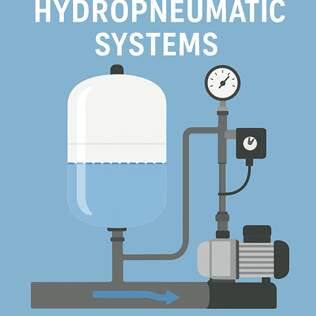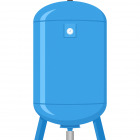Hydropneumatic Pumps & Booster Systems: Selection & Sizing Guide
A hydropneumatic system pairs a pump with a pressurized hydropneumatic tank to smooth flow, protect the pump from short cycling, and deliver steady pressure for plumbing or booster duties. Below is a practical, no nonsense guide to selecting pumps, sizing tanks, and tuning booster systems so your installation works reliably, quietly, and efficiently.
Understand the basic goals
You want steady pressure at the fixtures, acceptable pump run time, and a tank sized to reduce cycles while keeping the system responsive. That means balancing three variables: required flow (Q), required pressure or head (H), and the tank’s usable air volume (drawdown).
Step 1. Define system needs
Estimate peak instantaneous flow in liters per minute or gallons per minute, plus required delivery pressure at the highest fixture. For buildings, consider simultaneous use diversity. For booster systems, decide if you need constant pressure or fixed on/off control.
Step 2. Pump selection
Calculate total dynamic head: static lift plus friction losses in piping and fittings, convert to metres or feet. Choose a pump whose performance curve hits your required Q at that head, leaving a margin so the pump is not at the edge of its curve. For booster systems, prefer modular designs: VFD controlled centrifugal pumps or multistage pumps for high pressure, and parallel staged pumps for high flow.
Step 3. Tank sizing, concept and formula
Tanks are sized by the pump flow, desired run time between cycles, and the tank’s drawdown fraction. Use this practical formula:
Tank volume (usable) = Pump flow (volume/time) x Desired run time (time) / Drawdown fractionDrawdown fraction depends on cut in/cut out pressures and tank type, typical values range from 0.1 to 0.3 for bladder tanks. Example: a 20 L/min pump, 60 second desired run time, and drawdown 0.2 gives usable volume ≈ 600 L·s / 0.2 = 100 L. Then pick a standard tank slightly larger to allow for plumbing losses and aging.
Step 4. Precharge and maintenance
Set the tank precharge air pressure about 2 psi lower than pump cut in pressure for bladder tanks; check monthly during commissioning, then quarterly. If pressure drifts, recharge with a small air compressor for hydropneumatic tank topping up, or inspect for bladder failure.
Step 5. Booster specifics
For pressure booster systems, consider these options: VFD with pressure transducer for constant pressure, pressure switches plus an autostart controller for simple on/off duty, or pressure booster sets with alternating lead pumps for long life. Include check valves, pressure relief, and accessible isolation valves.
Operational checks and commissioning
Verify pump curve at expected system head, confirm tank drawdown with a stopwatch test, and listen for short cycling. Adjust cut in/cut out or tank precharge if cycles are too frequent.
A thoughtfully selected pump, a correctly sized hydropneumatic tank, and a tuned control strategy will extend pump life and keep users happy. Start with the flow and head, use the drawdown formula for tank sizing, and pick controls that match your required pressure behavior.

